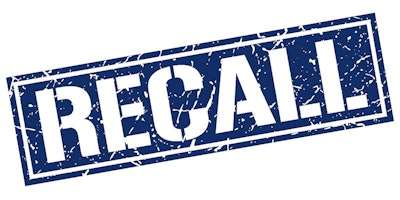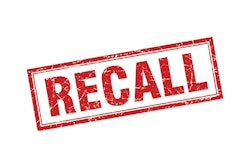
 Karen Burns
Karen BurnsYou make your products with the best of intentions. You work hard to provide consumers with newer, better, higher quality products. What happens when a problem arises with a product that is already on the market? For most food manufacturers, if you are in business long enough, you will likely face at least one product recall. Will your recall be a bump in the road or a fatal accident for your company?
What Financial Exposures Can Result From A Product Recall?
There are many direct costs associated with a recall, such as shipping, storing, replacing or destroying defective products. Expenses for managing public relations can add up quickly, as well.
Beyond direct expenses, other less obvious costs can loom even larger. Business interruption and lost profits are often the greatest cost of a product recall. Product liability from products that cause bodily harm to consumers can also increase risk exponentially.
Finally, don’t overlook potential damage to your reputation and loss of brand equity. Product recalls aren’t simple or inexpensive, but costs and potential risks can be managed with proper planning.
What Pre-Emptive Strategies Can Help Manage Risk And Financial Exposure?
Managing risk involves taking strategic actions to avoid recalls and the costs that come with them. Here are three relatively low-cost ideas that even the smallest of food manufacturers can implement to reduce the likelihood of a product recall incident or lessen the financial impact should one occur.
Create a culture of quality and cleanliness. This risk reduction strategy should span your entire business as well as your supply chain. Your employees are your best assets in preventing the recall opportunity from happening in the first place. While many recognize that implementing the rigorous standards of the Food Safety Modernization Act (FSMA) can be quite expensive, training employees with the basics of FSMA, and performing regular internal testing of your products for contaminants, will take you a long way in creating this culture. Further, employers can often get reimbursed for a significant portion of these training costs through state and local programs such as ETP in California. Finally, strive to only work with suppliers that can demonstrate their compliance with FSMA and possess the same quality culture as your organization.
Establish crisis management procedures. Who needs to know if a product gets contaminated? How will you quickly and efficiently get the word out? Developing these communication protocol procedures in advance will significantly reduce the amount of time that contaminated products remain on the market which reduces the extent of consumer exposure. How quickly can you shut down, clean up, and restart your operations? For smaller companies that only have a limited number of products, shutting down the line usually means enduring a period of zero revenues. Documenting your process where everyone has a role and is cross trained to perform back up procedures as needed will ensure that production down time is limited.
Purchase product recall insurance. Transferring risk is a good idea for any organization. Suppliers and insurers can help you recover the cost of a recall. Before a recall event occurs, ensure that you are carrying the right kind and amount of insurance. While the extent of coverage varies widely as do the related costs, obtaining at least some coverage for the risks you may face during a recall could mean the difference between life and death for your company. Consult with your insurance broker to determine the different plans available and which plan(s) are most affordable for you at this stage in your company’s life cycle. Additionally, insisting that key suppliers carry product recall insurance, including third party coverage whenever possible, helps to shift some of this burden and can save you money on our own policies.
How Should Companies Strategically Approach A Recall?
It is important when facing a recall to be proactive and to act quickly. Don’t wait for your hand to be forced. Voluntary recalls are easier to manage and generally less costly than mandatory recalls. By being proactive, you can better control the situation and the conversation surrounding it.
Take a long-term view of the situation. Don’t try to cover-up a problem. Communicate honestly. Consumers are more forgiving when you acknowledge a problem quickly and take corrective action.
Don’t underestimate the time, effort and expense required. Place your financial survival and the protection of your brand at the top of your priority list. Prepare a cash flow projection of the anticipated out of pocket expenses associated with the recall so that you can plan accordingly.
Finally, don’t try to tackle the problem alone. You will need legal, insurance and financial assistance to get through a recall. Your lenders and investors may have to bear some of the financial burden, and your CPA can help steer those conversations.
Karen Burns is Audit Partner at Sensiba San Filippo





















